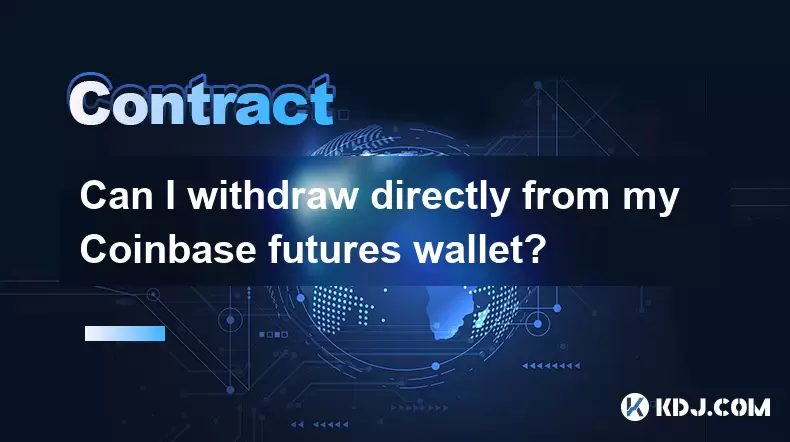-
 Bitcoin
Bitcoin $117400
-0.46% -
 Ethereum
Ethereum $3768
0.60% -
 XRP
XRP $3.551
2.09% -
 Tether USDt
Tether USDt $1.000
0.00% -
 Solana
Solana $203.2
11.30% -
 BNB
BNB $770.9
1.92% -
 USDC
USDC $0.9999
0.01% -
 Dogecoin
Dogecoin $0.2709
-0.02% -
 Cardano
Cardano $0.9024
4.49% -
 TRON
TRON $0.3139
0.60% -
 Hyperliquid
Hyperliquid $45.60
-1.41% -
 Stellar
Stellar $0.4730
-1.34% -
 Sui
Sui $4.025
2.15% -
 Chainlink
Chainlink $19.79
2.19% -
 Hedera
Hedera $0.2724
-2.39% -
 Avalanche
Avalanche $25.93
3.05% -
 Bitcoin Cash
Bitcoin Cash $524.0
-1.83% -
 Shiba Inu
Shiba Inu $0.00001558
0.50% -
 Litecoin
Litecoin $116.7
-0.30% -
 UNUS SED LEO
UNUS SED LEO $8.996
0.00% -
 Toncoin
Toncoin $3.334
1.83% -
 Polkadot
Polkadot $4.506
0.34% -
 Uniswap
Uniswap $10.99
4.83% -
 Ethena USDe
Ethena USDe $1.001
0.03% -
 Pepe
Pepe $0.00001461
3.17% -
 Monero
Monero $320.3
-1.01% -
 Bitget Token
Bitget Token $4.935
0.36% -
 Dai
Dai $0.9998
0.00% -
 Aave
Aave $322.4
-1.25% -
 Bittensor
Bittensor $455.6
9.33%
What is the maximum leverage for Bitcoin futures?
Bitcoin futures leverage lets traders control large positions with small capital, but high leverage like 100x increases liquidation risks and is regulated by jurisdiction.
Jul 20, 2025 at 03:42 pm

Understanding Leverage in Bitcoin Futures
Leverage in Bitcoin futures refers to the use of borrowed capital to increase the potential return on investment. Traders can control a larger position with a relatively small amount of capital. In the context of Bitcoin futures trading, leverage allows traders to open positions worth many times more than their account balance. However, while leverage can amplify profits, it also increases the risk of substantial losses, including the possibility of a margin call or liquidation.
Leverage is typically expressed as a ratio such as 2:1, 5:1, 10:1, or even higher, meaning a trader can control $10,000 worth of Bitcoin with only $1,000 in their account at 10x leverage. The exact leverage available depends on the exchange or trading platform and the regulatory environment governing the user’s jurisdiction.
Maximum Leverage Offered by Major Exchanges
Different cryptocurrency exchanges offer varying levels of leverage for Bitcoin futures contracts. Some platforms allow traders to use up to 100x leverage, while others may cap it at 20x or 25x, especially for retail traders. The maximum leverage available is often determined by the platform’s risk management policies and local regulatory requirements.
- Binance Futures offers up to 125x leverage on Bitcoin futures, though this is limited to certain trading pairs and depends on the trader’s account tier and risk settings.
- Bybit provides up to 100x leverage on BTC/USDT perpetual contracts, but traders must enable higher risk settings and meet certain margin requirements.
- OKX allows up to 100x leverage on Bitcoin futures, with adjustable leverage settings depending on the contract and user’s trading history.
- Bitstamp Futures offers more conservative leverage, typically up to 20x, aligning with its focus on institutional and professional traders.
Traders should note that higher leverage increases exposure to market volatility, and many platforms have auto-deleveraging (ADL) systems to manage risk during extreme price swings.
Regulatory Impact on Maximum Leverage
The maximum leverage available to traders is heavily influenced by regulatory policies in different jurisdictions. For instance, the U.S. Commodity Futures Trading Commission (CFTC) restricts leverage for U.S. residents to 50x on Bitcoin futures traded on regulated platforms like CME Group. In contrast, offshore exchanges with fewer restrictions may offer 100x or more to non-U.S. users.
European regulators such as ESMA (European Securities and Markets Authority) have capped leverage on crypto derivatives for retail investors at 2:1 to 5:1, depending on the asset and volatility. These restrictions aim to protect inexperienced traders from excessive losses but limit the flexibility of professional traders.
Therefore, traders must be aware of the regulatory framework governing their location and the exchange they use, as it directly affects the leverage they can access.
How to Adjust Leverage on Trading Platforms
Adjusting leverage on a futures trading platform is a straightforward process, but the steps may vary slightly across exchanges. Here’s a general guide to changing leverage settings:
- Log in to your trading account and navigate to the futures or derivatives section.
- Select the Bitcoin futures contract you want to trade (e.g., BTC/USDT perpetual).
- Look for the leverage adjustment panel usually located near the order entry or position management area.
- Click or tap to open the leverage settings and enter the desired level (e.g., 20x, 50x, or 100x).
- Some platforms require confirmation or risk acknowledgment before enabling high leverage.
- Ensure that your account has sufficient margin to support the new leverage level.
Failure to maintain adequate margin can result in liquidation, where the platform automatically closes your position to prevent further losses.
Risks and Considerations When Using High Leverage
While high leverage can significantly boost returns, it also introduces substantial risks. One of the most critical is the potential for liquidation, where the market moves against the trader’s position, and the exchange forcibly closes it to recover the borrowed funds. Liquidation can occur even with small price movements when using extreme leverage like 100x or more.
- Market volatility can cause rapid price swings, increasing the likelihood of margin calls and liquidation.
- Funding rates on perpetual contracts can erode profits over time, especially when holding leveraged positions for extended periods.
- Slippage during high volatility can lead to execution prices worse than expected, especially with large positions.
- Auto-deleveraging (ADL) may reduce or close your position if the exchange needs to balance risk during extreme market conditions.
Traders are advised to use stop-loss orders and risk management tools to mitigate these risks, especially when using high leverage.
Frequently Asked Questions
Can I lose more than my initial investment when using leverage?
Yes, depending on the platform and the type of contract, it is possible to lose more than your deposited funds, especially if the platform does not offer negative balance protection. However, many major exchanges now include this feature to prevent traders from owing more than their account balance.
Is higher leverage always better for Bitcoin futures trading?
Not necessarily. While higher leverage can amplify gains, it also increases the risk of liquidation. Traders should consider their risk tolerance, strategy, and market conditions before choosing a leverage level. Conservative traders may prefer lower leverage to preserve capital.
How does leverage affect margin requirements?
Higher leverage reduces the amount of margin required to open a position. For example, at 100x leverage, a trader needs only 1% of the total position value as margin. However, this also means that even a small adverse price movement can trigger a margin call or liquidation.
Can I change leverage after opening a position?
Yes, most platforms allow traders to adjust leverage even after opening a position. However, changing leverage may impact the margin used and the liquidation price. It’s important to monitor these changes carefully to avoid unexpected liquidation.
Disclaimer:info@kdj.com
The information provided is not trading advice. kdj.com does not assume any responsibility for any investments made based on the information provided in this article. Cryptocurrencies are highly volatile and it is highly recommended that you invest with caution after thorough research!
If you believe that the content used on this website infringes your copyright, please contact us immediately (info@kdj.com) and we will delete it promptly.
- MoonBull's Whitelist Mania: Your Last Shot at 100x Crypto Gains?
- 2025-07-22 10:30:12
- Meme Coins in 2025: Explosive Gains or Fading Fad?
- 2025-07-22 10:30:12
- Kim Keon-hee Crypto Probe: Scandal Rocks South Korea's Political Scene
- 2025-07-22 10:50:12
- ETH Holders in Profit: Value Surge Fuels Bullish Sentiment
- 2025-07-22 09:30:13
- NEAR Protocol's AI Leap: Double-Digit Gains and Future Potential
- 2025-07-22 09:30:13
- Cryptos, Meme Coins, Buy Now: Riding the Wave of Hype
- 2025-07-22 08:30:13
Related knowledge

Can I withdraw directly from my Coinbase futures wallet?
Jul 22,2025 at 02:14pm
Understanding Coinbase Futures WalletsCoinbase does not currently offer a dedicated futures wallet within its standard Coinbase app or platform. Futur...

Why was my position liquidated?
Jul 22,2025 at 12:07pm
Understanding Liquidation in Crypto TradingLiquidation in cryptocurrency trading occurs when your position is automatically closed by the exchange due...

Is Binance Futures available in the US?
Jul 22,2025 at 11:42am
Understanding Binance Futures and Its Global ReachBinance Futures is a derivatives trading platform offered by Binance, one of the world’s largest cry...

What is a maker vs a taker fee?
Jul 19,2025 at 01:14am
Understanding the Basics of Cryptocurrency Exchange FeesIn the world of cryptocurrency trading, maker vs taker fees are a fundamental concept that eve...

How to secure your crypto futures trading account?
Jul 21,2025 at 11:42pm
Understanding the Risks in Crypto Futures TradingCrypto futures trading involves significant risks due to market volatility and leverage. Your trading...

Is Bitcoin futures trading a scam?
Jul 22,2025 at 01:42am
Understanding Bitcoin Futures TradingBitcoin futures trading refers to the process of buying and selling contracts that derive their value from the fu...

Can I withdraw directly from my Coinbase futures wallet?
Jul 22,2025 at 02:14pm
Understanding Coinbase Futures WalletsCoinbase does not currently offer a dedicated futures wallet within its standard Coinbase app or platform. Futur...

Why was my position liquidated?
Jul 22,2025 at 12:07pm
Understanding Liquidation in Crypto TradingLiquidation in cryptocurrency trading occurs when your position is automatically closed by the exchange due...

Is Binance Futures available in the US?
Jul 22,2025 at 11:42am
Understanding Binance Futures and Its Global ReachBinance Futures is a derivatives trading platform offered by Binance, one of the world’s largest cry...

What is a maker vs a taker fee?
Jul 19,2025 at 01:14am
Understanding the Basics of Cryptocurrency Exchange FeesIn the world of cryptocurrency trading, maker vs taker fees are a fundamental concept that eve...

How to secure your crypto futures trading account?
Jul 21,2025 at 11:42pm
Understanding the Risks in Crypto Futures TradingCrypto futures trading involves significant risks due to market volatility and leverage. Your trading...

Is Bitcoin futures trading a scam?
Jul 22,2025 at 01:42am
Understanding Bitcoin Futures TradingBitcoin futures trading refers to the process of buying and selling contracts that derive their value from the fu...
See all articles

























































































